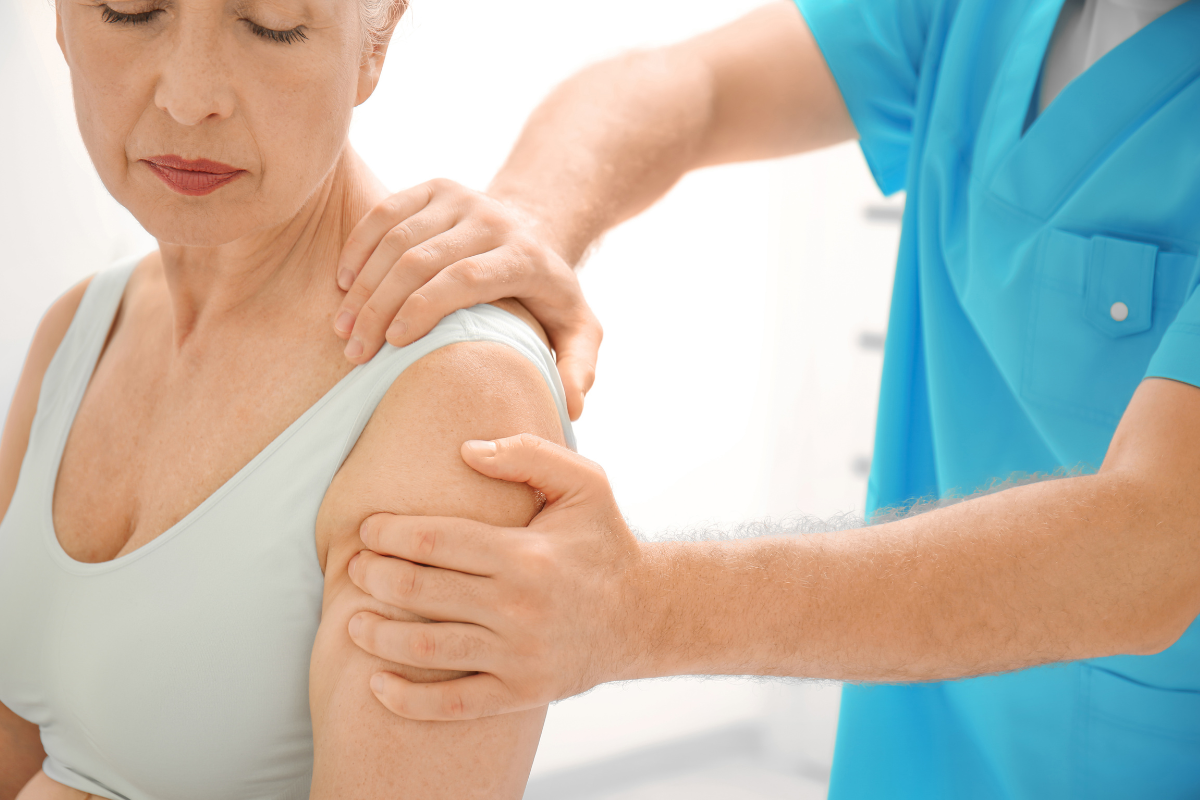EIM Personal Training offers personalized fitness and nutritional plans to best meet your needs. We do private training sessions, small-group workouts, and nutritional guidance. Learn more about EIM Personal Training’s services here.
Physical therapy is a rehabilitative process that helps restore movement and function through specific exercises and stretches. It’s commonly prescribed after surgeries, injuries, or to manage chronic conditions and age-related limitations. While these exercises are crucial for recovery, it’s also normal to feel some discomfort afterward. In this guide, we’ll walk you through what to do if you’re experiencing post-therapy pain and how to manage it effectively.
Preparing for Your First Visit
At your first physical therapy session, come prepared with any important medical documents. This may include recent imaging (like X-rays or MRIs), a list of current medications, your insurance card, and any instructions or referrals provided by your doctor.
Be sure to wear comfortable, loose-fitting clothes and supportive sneakers—especially if your therapist will need to examine or access an injured area during your session.
If your therapy is scheduled soon after surgery or you’re experiencing limited mobility, it’s wise to arrange for a ride home. Soreness often peaks after the first appointment, and having a trusted friend or family member drive you can make recovery a bit smoother.
Recognizing the Right Kind of Pain
Muscle soreness and minor swelling are expected after therapy—it means your muscles are re-engaging and adapting to the exercises. However, certain symptoms shouldn’t be ignored. If you feel sharp or stabbing pain, notice a decline in mobility, or develop new areas of discomfort, contact your doctor right away. These may be signs that something isn’t healing properly.
Managing Pain After Your Session
Here are a few proven ways to ease the typical discomfort that follows physical therapy:
R.I.C.E. Method
This tried-and-true technique stands for Rest, Ice, Compression, and Elevation. It’s effective for reducing inflammation and relieving soreness after your sessions.
OTC Pain Relief
Over-the-counter medications like ibuprofen or acetaminophen can offer relief for muscle aches and swelling. Make sure to consult with your doctor or therapist to ensure they’re safe for you to use.
Keep Stretching
Gentle stretching between therapy sessions can help prevent stiffness, promote circulation, and reduce soreness caused by lactic acid buildup. Your therapist can recommend stretches that are safe and beneficial for your specific needs.
Ready to Keep Progressing? EIM Can Help
At EIM, we believe recovery is just the first step toward lifelong wellness. Our team begins with a thorough assessment of your health history, physical abilities, and goals. Your personal trainer may also work with your healthcare provider to build a safe, personalized fitness plan. From initial measurements to milestone achievements, we’ll be with you every step of the way.

